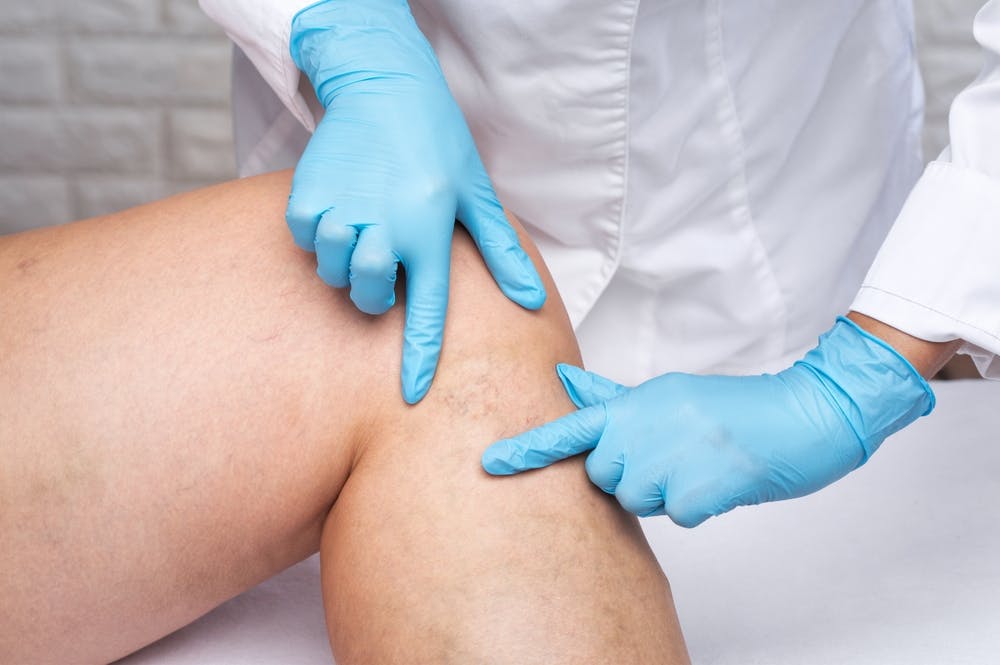
Are venous malformations inherently dangerous? This uncertainty is common among those diagnosed with the condition. Venous malformations are abnormal clusters of veins, typically present at birth. While they can occur anywhere in the body, their risks and realities vary. Understanding these malformations, their diagnosis, management, safety concerns, prognosis, and potential lifestyle adjustments is imperative. Dive into this insightful exploration to demystify venous malformations and learn why medical vigilance is paramount.
The Formation of the Lesion
Venous malformations, a subset of vascular anomalies, originate due to abnormal development of blood vessels. These lesions manifest as clusters of abnormal veins susceptible to dilation and may form blood clots, posing risks of complications like increased blood pressure within these vessels. While some cases result from genetic mutations, they often become evident during a physical exam or due to symptoms like swelling, pain, or loss of function in affected areas. Diagnosis typically involves imaging techniques like magnetic resonance imaging (MRI) to visualize these abnormal vessels. Treatment options vary, with sclerotherapy being a common non-invasive approach, injecting a solution into the vessels to shrink them. In severe cases impacting function or causing significant symptoms, surgical procedures might be necessary to remove the abnormal blood vessels, aiming to restore normal blood flow and alleviate associated complications.
Prevalence in the Population
Venous malformations, affecting about 1 in 10,000 patients and 1 in 5,000 children, require early recognition for optimal treatment. The condition often presents as visible skin changes or soft swelling, diagnosed through physical examination and radiological techniques like Duplex ultrasound and MRI scans. Histological examination may be necessary for precise diagnosis. A holistic approach, considering medical history and symptoms, guides accurate diagnosis and personalized treatment planning.
Diagnostic Procedures in Children
In diagnosing venous malformations in children, a pediatrician conducts a thorough physical examination, palpating for abnormalities. Radiological imaging, like Ultrasound or MRI, provides detailed views of affected areas. Biopsy, requiring expertise for safety, obtains tissue samples for analysis. Accurate diagnosis and management strategies result from these procedures. Venous malformations pose health risks due to bleeding vulnerability, impeding bodily functions, clot development, transformation into phleboliths, and potential aesthetic impacts, emphasizing the need for regular checkups and tailored management.
Lesion Risks and Complications
Venous malformations are clustered abnormal veins that can cause increased blood pressure and other complications. Lesions often present with symptoms like swelling, pain, or loss of function, making diagnosis difficult. Physical examination and radiological tests are essential for early diagnosis, and treatment options vary depending on the severity of the lesion. Sclerotherapy is a common non-invasive approach to shrinking the lesion, while invasive procedures might be necessary in more severe cases. Laser therapy and imaging tests may also be used to treat venous malformations. Blood loss and blood abnormalities are common complications, requiring proper care and attention from medical professionals.
Safety Concerns Regarding Venous Malformations
There exist legitimate safety concerns about venous malformations. One such concern is the risk of clot formation. The blood in the malformation could stagnate and may lead to the formation of a clot or thrombosis. If a clot dislodges, it can cause a serious condition called pulmonary embolism.
Another safety concern is the risk of infection. The malformation could harbor bacteria, causing an infection. This is often the result of sluggish blood flow or damage to the vein caused by the malformation. If the infection isn’t treated, it can spread to other parts of the body.

Patients are also concerned about the potential for the malformation to bleed. The malformation could rupture and result in significant bleeding or even a hemorrhage. This is particularly concerning for patients with large or deeply located malformations.
Moreover, venous malformations can also have psychological effects on patients. The physical appearance of some venous malformations may be disfiguring, resulting in emotional distress and reduced quality of life.
Safety Tips for Patients with Lesions
Patients with lesions must adhere to certain safety measures. They should avoid activities that may cause unnecessary harm or rupture to the lesion area. Regular check-ups with a healthcare provider are vital to monitor the condition and adapt treatment plans based on the lesion’s growth.
Where a lesion is near a joint, patients should practice gentle movements to prevent injury or inflammation. Keeping the area clean and applying appropriate medical creams or balms helps prevent infection.
Good hydration and balanced nutrition also aid the body in handling pathological changes from lesions. Lastly, patients should be well-informed and educated about the risks related to their lesion, and when to seek immediate medical help.
The Prognosis for Patients With Venous Malformations
The long-term outlook for venous malformation patients hinges on severity and location. While some face aesthetic concerns, others confront challenges in sensitive areas. Early intervention and proper management are crucial, leveraging advancements for improved prognoses. Vigilant monitoring is vital for extensive or growing malformations to detect potential issues promptly. Beyond management, the focus extends to enhancing patients’ lives and psychological well-being through consistent care and support.
Children’s prognoses vary based on malformation severity. Early diagnosis aids in tailored prognoses and management. Despite generally good outcomes, holistic approaches are crucial, integrating physical and psychological support due to potential psychological impacts. Regular surveillance post-diagnosis ensures timely adjustments, potentially leading to better long-term prognoses.
Lifestyle Adjustments for Patients with Venous Malformations
Patients diagnosed with venous malformations must make significant lifestyle changes to manage symptoms and enhance their quality of life. This adaptation involves adjustments in physical activities, favoring low-impact exercises like swimming or yoga to avoid lesion rupture and discomfort. Maintaining a healthy weight through balanced diets becomes crucial while using specialized care products such as compression stockings aids blood flow and reduces swelling. Regular elevation of the affected limb post-activity proves beneficial. Consistent follow-ups with healthcare providers monitor the lesion’s status and treatment progress, demanding patient commitment and discipline. Implementing these personalized lifestyle changes not only alleviates physical discomfort but also reduces the psychological stress linked with the diagnosis, serving as preventive strategies against future complications. With robust support systems and professional medical guidance, patients can integrate these changes into their daily routines, leading to an improved prognosis and healthier living.
How Lesion Affects Children’s Lifestyle and Adaptations Needed
For lymphatic malformations, children must modify their lifestyle to avoid factors that can provoke lesion rupture. Swimming and other vigorous activities should be avoided, and children should limit their weight to maintain a healthy BMI. For capillary malformations, children must use compression stockings post-activity to reduce swelling and discomfort. The approach for children is usually the same as for adults except for smaller lesions that may not require surgery. Sclerotherapy treatment is used to close off the abnormal blood vessels and improve symptoms. In general, normal function is maintained with minor surgical removal. However, for larger malformations or if lesion rupture occurs, surgery may be necessary. Children should be advised about potential risks and benefits before treatment decisionmaking.
Making sense of venous malformations can be overwhelming. Thus, professional consultation is crucial. Dr. Andre Panossian, a trusted authority in the field, is equipped to provide clear, concise, and compassionate guidance. He understands the intricacies of venous malformations and brings not just expertise, but a deep commitment to patient care. Reach out to Dr. Panossian today.


